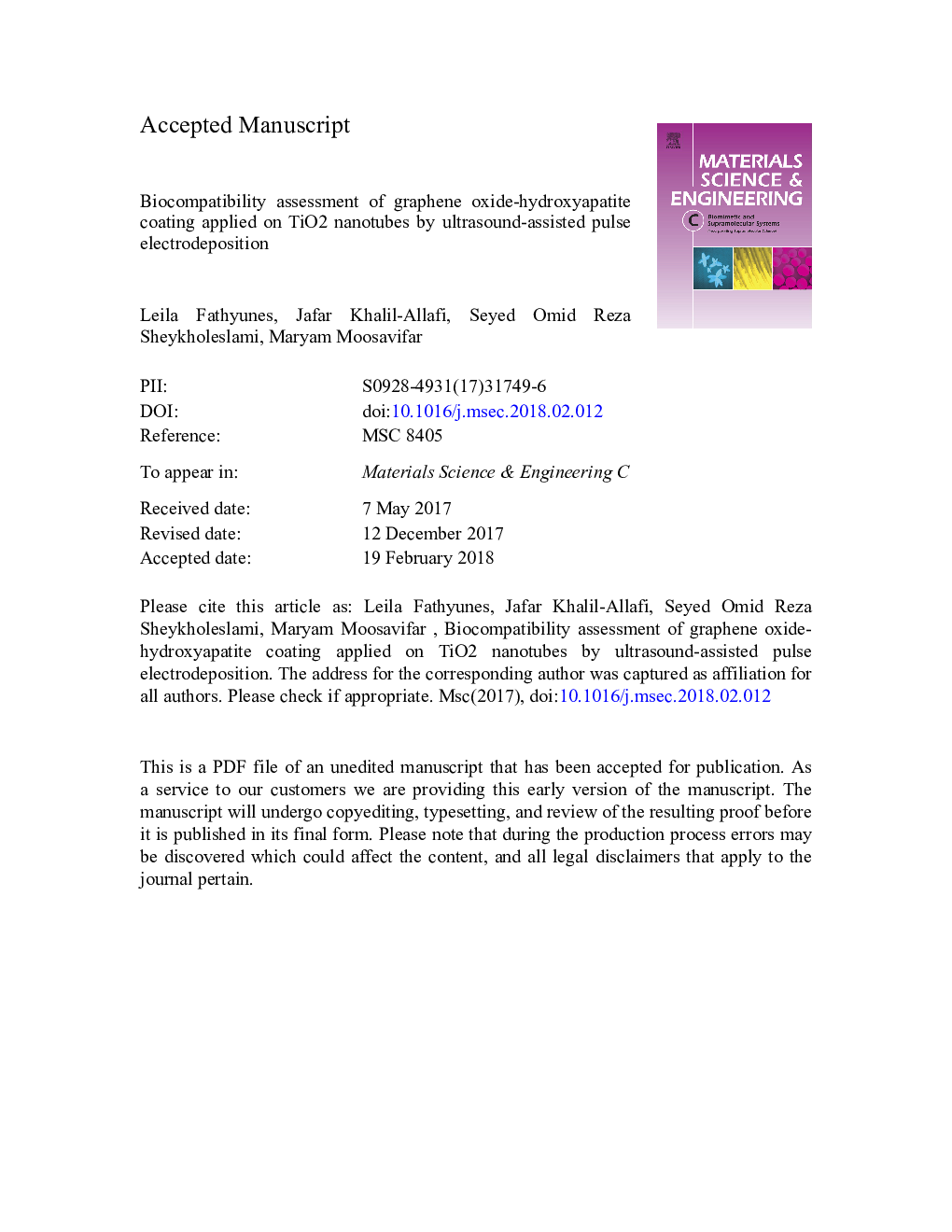| Article ID | Journal | Published Year | Pages | File Type |
|---|---|---|---|---|
| 7866361 | Materials Science and Engineering: C | 2018 | 41 Pages |
Abstract
In this study, the ultrasound-assisted pulse electrodeposition was introduced to fabricate the graphene oxide (GO)-hydroxyapatite (HA) coating on TiO2 nanotubes. The results of the X-ray diffraction (XRD), Fourier Transform Infrared spectroscope (FTIR), Transmission Electron Microscope (TEM) and micro-Raman spectroscopy showed the successful synthesis of GO. The Scanning Electron Microscope (SEM) images revealed that in the presence of ultrasonic waves and GO sheets a more compact HA-based coating with refined microstructure could be formed on the pretreated titanium. The results of micro-Raman analysis confirmed the successful incorporation of the reinforcement filler of GO into the coating electrodeposited by the ultrasound-assisted method. The FTIR analysis showed that the GO-HA coating was consisted predominantly of the B-type carbonated HA (CHA) phase. The pretreatment of the substrate and incorporation of the GO sheets into the HA coating had a significant effect on improving the bonding strength at the coating-substrate interface. Moreover, the results of the fibroblast cell culture and 3â(4,5âdimethylthiazolylâ2)â2, 5âdiphenyltetrazolium bromide (MTT) assay after 2â¯days demonstrated a higher percentage of cell activity for the GO-HA coated sample. Finally, the 7-day exposure to simulated body fluid (SBF) showed a faster rate of apatite precipitation on the GO-HA coating, as compared to the HA coating and pretreated titanium.
Related Topics
Physical Sciences and Engineering
Materials Science
Biomaterials
Authors
Leila Fathyunes, Jafar Khalil-Allafi, Seyed Omid Reza Sheykholeslami, Maryam Moosavifar,
